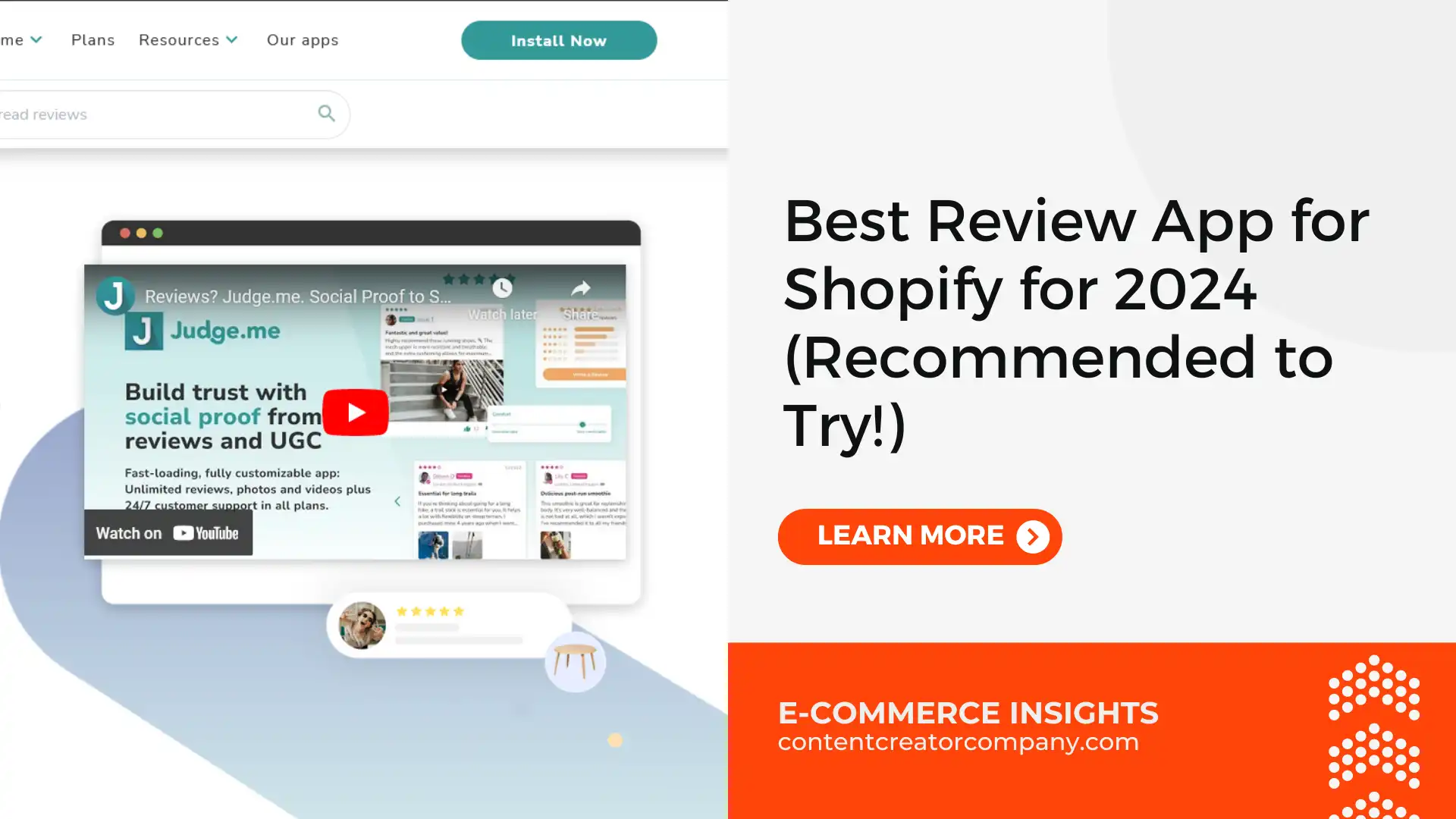
As a professional ecommerce seller, you know convenience and customer satisfaction reign supreme, and efficient return management has become a crucial component of success. As online shopping continues to grow, so does the inevitable need for seamless return processes.
Innovative ecommerce return solutions not only enhance the customer experience but also streamline operations, reduce costs, and foster brand loyalty.
Table of Contents
What are Returns in Ecommerce?
Ecommerce returns refer to the process of customers returning products they’ve purchased online for various reasons, such as receiving the wrong item, product defects, sizing issues, or simply changing their minds. Unlike traditional brick-and-mortar stores, where returns can be handled in person, ecommerce returns involve additional steps, such as packaging, shipping, and processing the returned items.
Efficiently handling returns is essential for ecommerce businesses, as it directly impacts customer satisfaction, brand reputation, and overall profitability. A smooth and hassle-free return experience can turn a potentially negative situation into a positive one, fostering trust and encouraging repeat business.
Why Returns Matter
In the world of ecommerce, returns are an inevitable part of the business. Customers may change their minds, receive the wrong item, or encounter product issues, leading to the need for a smooth and efficient return process. How you handle returns can significantly impact customer satisfaction, brand loyalty, and ultimately, your bottom line.
While returns are necessary, they can also be a logistical and financial burden for ecommerce businesses. Inefficient return processes can result in lost revenue, increased operational costs, and dissatisfied customers. However, innovative ecommerce return solutions can help mitigate these challenges and turn returns into an opportunity to enhance the customer experience.
Streamlining the Return Process
One of the most crucial aspects of handling returns effectively is to make the process as seamless and hassle-free as possible for your customers. A complicated or confusing return process can lead to frustration and potentially lost customers. Implement a user-friendly return portal, provide clear instructions, and offer multiple return options, such as prepaid return labels or drop-off locations.
Transparency is key when it comes to returns. Ensure that your return policies are clearly stated on your website, product pages, and order confirmations. Specify the acceptable timeframe for returns, any restocking fees or exceptions, and the process for obtaining refunds or exchanges. Clear communication upfront can set realistic expectations and prevent misunderstandings down the line.
Reasons for Returns and How to Address Them
1. Incorrect Item Received
One of the most common reasons for returns is receiving the wrong item. To address this issue, implement robust order verification processes, double-check order fulfillment, and consider implementing additional safeguards, such as barcode scanning or weight checks. Additionally, provide clear and detailed product descriptions to minimize the likelihood of misunderstandings.
2. Product Defects or Damage
Defective or damaged products can significantly impact customer satisfaction and brand reputation. Implement stringent quality control measures, both internally and with your suppliers. Provide clear instructions for reporting defects and offer hassle-free returns or replacements. Consider implementing a feedback loop to identify and address recurring issues promptly.
3. Sizing Issues
For apparel and footwear retailers, sizing issues can be a common cause of returns. Provide comprehensive sizing guides, including detailed measurements and fit recommendations. Encourage customers to consult the sizing information before making a purchase and consider offering free returns or exchanges for sizing-related issues.
4. Change of Mind
This is another reason that you as the seller find it annoying… Sometimes, customers may simply change their minds about a purchase. While this reason for returns is unavoidable, you can minimize its impact by offering a generous return window, providing detailed product information, and ensuring transparency about return policies upfront.
Innovative Ecommerce Return Solutions

Automated Return Portals
Leverage technology to streamline the return process. Automated return portals allow customers to initiate returns with just a few clicks, minimizing the need for manual intervention. These portals can provide real-time updates on the return status, generate return labels, and even offer instant refunds or exchanges, enhancing the overall customer experience.
AI-Powered Return Predictions
Artificial Intelligence (AI) and machine learning can help ecommerce businesses predict and anticipate returns. By analyzing historical data, customer behavior, and product performance, AI algorithms can identify potential return patterns and risk factors.
This valuable insight can help businesses proactively address issues, optimize inventory management, and implement targeted strategies to reduce unnecessary returns.
Reverse Logistics Optimization
Efficient reverse logistics is crucial for handling returns effectively. Implement streamlined processes for receiving, inspecting, and processing returned items. Consider partnering with third-party logistics providers specializing in reverse logistics to leverage their expertise and infrastructure.
Optimizing this aspect of the return process can minimize operational costs and maximize the value recovered from returned products.
Utilize Data and Analytics
Collect and analyze data related to returns to identify patterns and trends. Track reasons for returns, product categories with high return rates, and customer demographics. By understanding these patterns, you can implement targeted strategies to address specific issues and optimize your return processes accordingly.
Use data and analytics to pinpoint areas for improvement within your ecommerce operations. Identify products with consistently high return rates, analyze customer feedback, and assess the efficiency of your return processes. Continuously monitor and refine your strategies based on the insights gained from data analysis.
Refund and Exchange Policies
Offer flexible refund options to accommodate different customer preferences. While some customers may prefer a full refund, others may appreciate store credit or the option to exchange for a different product. Providing multiple refund options can enhance customer satisfaction and encourage repeat business.
Make the exchange process as seamless as possible for customers. Allow for easy exchanges within a reasonable timeframe, and consider offering free return shipping or prepaid labels for exchanges. Streamlining the exchange process can reduce the perceived hassle and encourage customers to give your products another try.
Customer Service and Communication
Provide multiple channels for customers to seek assistance with returns, such as email, phone, live chat, or social media. Ensure that your customer service team is trained to handle return inquiries promptly and professionally. Responsive support can go a long way in building trust and fostering positive customer relationships.
Throughout the return process, maintain clear and transparent communication with your customers. Provide updates on the status of their returns, expected timelines for refunds or exchanges, and any additional information they may need. Transparency can help manage customer expectations and reduce frustration.
Minimizing Returns Through Optimization

While returns are inevitable, there are proactive steps you can take to minimize them and improve customer satisfaction.
1. Accurate Product Descriptions
Provide detailed and accurate product descriptions, including dimensions, materials, and any relevant specifications. Clear and informative descriptions can help set realistic expectations and reduce the likelihood of customers receiving an item that doesn’t meet their needs.
2. High-Quality Product Photography
Invest in professional product photography that showcases your products from multiple angles and in various scenarios. High-quality visuals can help customers better understand what they’re purchasing, reducing the chances of returns due to mismatched expectations.
3. Comprehensive Sizing Guides
For apparel and footwear retailers, offer comprehensive sizing guides that include detailed measurements, fit recommendations, and size conversion charts. Encourage customers to review these guides before making a purchase to minimize sizing-related returns.
Ecommerce Return Solutions Conclusion
Implementing innovative ecommerce return solutions is crucial for enhancing customer satisfaction, building brand loyalty, and driving long-term success in the ecommerce landscape.
By streamlining the return process, leveraging data and analytics, offering flexible refund and exchange policies, and focusing on clear communication and customer service, you can turn returns into an opportunity to differentiate your brand and create a superior customer experience.
FAQs Ecommerce Return Solutions
1. What is the importance of having a clear return policy?
A clear return policy sets expectations upfront and helps prevent misunderstandings. It ensures transparency, builds trust with customers, and minimizes potential disputes.
2. How can automated return portals improve the customer experience?
Automated return portals streamline the process, making it easier for customers to initiate returns with just a few clicks. They provide real-time updates, generate return labels, and can even offer instant refunds or exchanges, enhancing convenience and satisfaction.
3. What is reverse logistics optimization, and why is it important?
Reverse logistics optimization refers to streamlining the processes for receiving, inspecting, and processing returned items. It helps minimize operational costs, maximize the value recovered from returned products, and ensure efficient handling of returns.
4. How can AI and machine learning help with ecommerce returns?
AI and machine learning can analyze historical data, customer behavior, and product performance to predict and anticipate returns. This insight can help businesses proactively address issues, optimize inventory management, and implement targeted strategies to reduce unnecessary returns.
5. What are some common reasons for ecommerce returns?
Common reasons for returns include receiving the wrong item, product defects or damage, sizing issues, and changes of mind by customers.
6. How can accurate product descriptions and high-quality photography help minimize returns?
Detailed and accurate product descriptions, along with professional photography showcasing products from multiple angles, can help set realistic expectations and reduce the likelihood of customers receiving an item that doesn’t meet their needs.
7. Why is responsive customer service important for handling returns?
Responsive customer service, with multiple support channels and prompt assistance, can help build trust, manage customer expectations, and reduce frustration throughout the return process.
8. How can data and analytics help improve ecommerce return processes?
Data and analytics can help identify return patterns, pinpoint areas for improvement, track reasons for returns, and analyze customer feedback. This insight can inform targeted strategies to optimize return processes and operations.
Are You a Shopify Store Owner Struggling to Craft Compelling Product Descriptions That Sell?
Our expert team specializes in writing product descriptions on Shopify that captivate audiences and drive conversions. With a keen understanding of SEO principles, we infuse every description with targeted keywords to ensure maximum visibility on search engines.
By leveraging our content creation for SEO content writing services, you’ll not only attract more traffic to your store but also entice customers with persuasive descriptions that highlight the unique features and benefits of your products.
Say goodbye to lackluster descriptions and hello to increased sales! Elevate your Shopify store with our professional writing services today and watch your business thrive.





